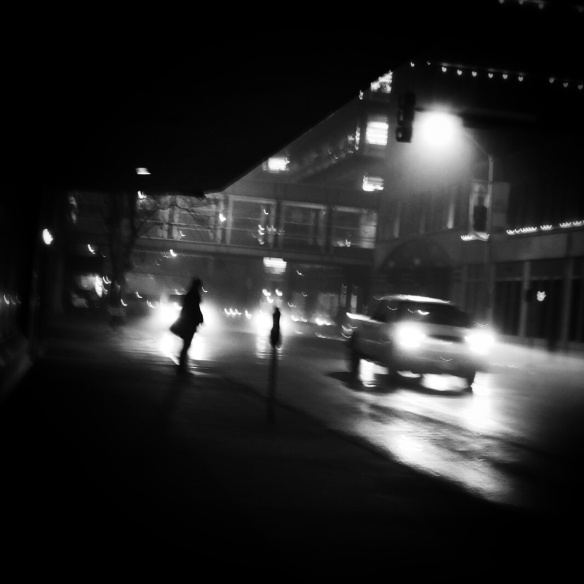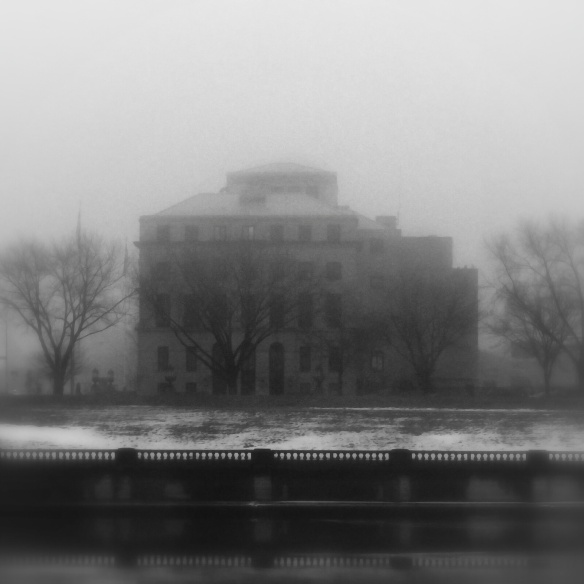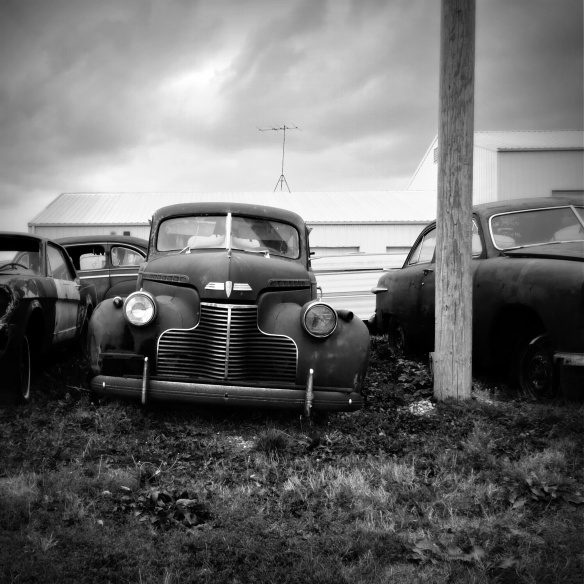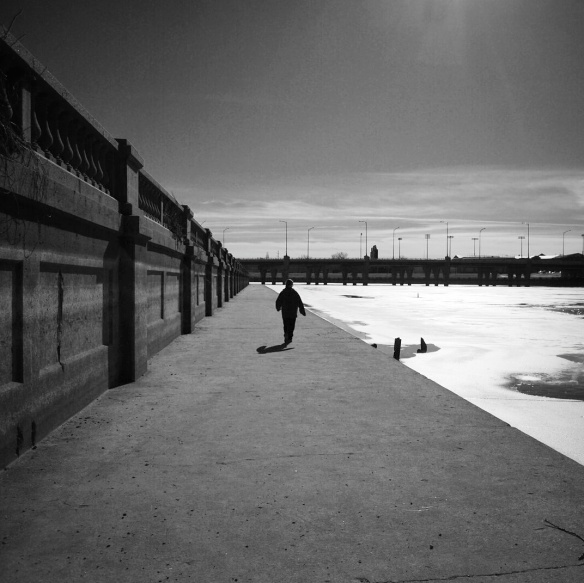Naming new things is tough work. Back in the 1850s they had to coin a term to describe the physical manifestation of communications sent over a distance by electrical signal. Somebody came up with telegram. That’s a portmanteau of tele, which is Greek for ‘over a distance’, and gram, also Greek, meaning ‘something written or drawn’. It’s really pretty catchy, but telegram totally pissed off language purists of the day. They absolutely hated it. Hated it.
May I suggest to such as are not contented with ‘Telegraphic Dispatch’ the rightly constructed word ‘telegrapheme’? I do not want it, but … I protest against such a barbarism as ‘telegram.’ [Richard Shilleto, Cambridge Greek scholar, London “Times,” Oct. 15, 1857]
I’m not any sort of purist, but I find Instagram objectionable as a word. It’s so bland and corporate. It could have been worse; they might have called it Instagrapheme which, let’s face it, would have been intolerable. Still, Instagram is an unattractive and unappealing name, and it made it easy for lots of folks (including me) to sneer at it. And we did.
We sneered at Instagram for being a cheap, easy, lazy way to turn crappy photos into images that look artsy. Not ‘artful’ or ‘artistic’ but artsy. We sneered at it because the learning curve for using Instagram is — well, it’s hardly a curve at all. It’s almost a straight line. You shoot a photo with your cell phone, you flip through a couple dozen preset filters until you find one you like, tap to apply it, and hey bingo, you have yourself an artsy photo of your drunken friends at a tacky Chinese restaurant.
That ease of use is a big part of the appeal, of course. It allows any tunahead to bang out a halfway decent photograph. But it pisses off photography purists (purists of every persuasion spend a lot of time being pissed off, have you noticed?). The ease of use is another thing that makes Instagram so sneerable.
I grew up shooting film — and shooting it with a completely manual rangefinder camera without a resident light meter. That gave me certain inalienable sneering rights. But at the same time, I’m totally in favor of the democratization of photography. I love the fact that so many people are out there photographing so many things.
That put me in a damned awkward position. How can I embrace the democratization of photography and at the same time still be able to sneer at Instagram? I told myself the app, at its best, was just a cheap imitation of real photography. At its worst, it was the devil itself. I told myself a lot of people — people who might otherwise actually learn the important mechanics and physics of photography — would substitute the creative process (which, let’s face it, can be really hard work) with the unthinking application of a filter. So I could argue that sneering at Instagram was actually good for photography. Right?
All that sneering was made a lot easier by the fact that I’d never really looked at Instagram. Then I bought a smartphone with a tolerably decent camera. And suddenly everybody was all “Dude, join Instagram.”
So I reluctantly decided to look at it. And to my smug delight, I discovered I was right. It really was a cheap imitation of real photography. It really was an artistic wasteland of hipsters in vests photographing their lattes, and hiphop wannabes shooting pictures of their two hundred dollar sneakers, and women shooting duckface selfies in bathrooms, and …whoa…hold on hold on…what’s this? What the hell is this?
‘This’ turned out to be good work. I started to come across photography I actually wanted to see. Images that impressed the hell out of me and made me want to see more. On Instagram.
I found solid, serious street photography. And good travel and landscape photography. And lawdy, good fine arts photography. I found good editorial news photography. Good color photography, good black-and-white photography. Good portraiture. Good photography. All of it right there in a 3-inch square on Instagram.
And that good shit, it was scalable. It looked good in a 3-inch square on my phone, but it continued to look good in larger versions. I was not expecting that.
Yes, yes — there’s a staggering amount of appalling crap on Instagram, but there’s a staggering amount of appalling crap everywhere in the world of photography. It’s one of the facts you accept if you believe in the democratization of photography. You accept the existence of the crap, and you try to help stem the tide by not making crap yourself.
So hey, I joined Instagram. Quietly. Uncomfortably. Under an assumed name. Like an atheist going to Sunday School. I began shooting a simple little series — something I could delete easily if I decided I was contributing to the crapitization of photography. That project gradually transformed and grew into something more complex, but coherent and constrained — which is how real photo projects start. I may write about that project at another time, but what it meant for me was that I was taking Instagram seriously. How the hell did that happen?
It also meant (in my mind, at least) that I should limit that account to that project.
So I created a second Instagram account. Yes, I actually created a second Instagram account, and devoted it to shooting black-and-white images.
The photographs you see here, and along the side of the blog (and if you’re interested, you can see more of them here) have taught me that Instagram is an incredibly flexible and elastic app. You can shape it to fit whatever you want to photograph, in whatever style you want to photograph it. You don’t have to rely on their crappy little filters; there are some very fine processing apps for your mobile phone that give you a metric buttload of control over the image.
Instagram, it turns out, is not about filters. It’s not even about easily turning crappy photos into artsy ones. It’s about distribution. It’s about putting the photos out there.
Instagram may, in fact. turn out to be the devil after all. It can be that seductive. But it’s the devil that’s likely to have the most influence on the shape of modern photography.
Here’s where I drop in some more esoteric information. Eight hundred years ago King Richard I of England was captured on his way back from the Holy Land, where he’d been cheerfully slaughtering Muslims during the Crusades. While he was imprisoned, his brother John attempted to usurp the throne. When Richard won his release, King Philip of France sent a message to John, warning him. The message read: Look to yourself. The devil is loose.
The analogy isn’t perfect, but the warning is. The devil IS loose. And you know what? I kind of like him.








I had been meaning to comment that you’d been rocking the black-and-white.
At one time, I thought about strictly posting black-and-white there as well, but I have such a crap camera, and I tend to post more mundane and quotidian stuff anyway, versus the thoughtful, artful stuff in your gallery… stream… whatever it’s called.
LikeLike
Thanks Patrick. It seems to me that Instagram would suit you and the way you move around your city. One of the wonderful things about San Francisco is that it’s densely packed with diversity — and you have such a terrific eye for the intimate.
LikeLike
we have to sneer… we are busy when people mention something new (to us), and a quick glance is unearth the abundance of vapid — I think that is the name for the internet. current sneer: Snapshat.
yet, right, more so 6 years after the introduction of smart phones, the camera and related apps can work just dandy if one does not make it cry — usually, literally, in the dark or dimlit scenes.
so once we cast aside the vapidness, and keep the camera to where it likes to play, it can do things that pleases us. instantplease, as it were.
I still shrug at the “instant” part of the word meaning to ‘take the photo now, and share it instantly.’ rather than, like telegram, the “instant” and “tele” relate to the medium/speed at which the photo/message is sent. but then, who is to argue pedantry with a hashtag? #laterdude.
LikeLike
You know, so much depends on why you’re taking the photo in the first place. There are some folks for whom the ‘instant’ nature is the most important facet of Instagram — and I can see a LOT of uses for that sort of wham-bam/shoot-send style of photography. It’s not my approach, but the immediacy is a huge draw for a lot of people.
I know you’re a fan of VSCO, which is a radical improvement over the standard Instagram filter system. But I’m still entrenched in Snapseed.
LikeLike
I am a fan of VSCO, for their low-key Grid and presets, but yes, it is not a replacement for Snapseed. the way I look at it is that Snapseed/Photogene2/Filterstorm/PhotoFx (not sure if multi-platform), are for developing the shot, and then comes the presets (VSCOcam, CameraBag2, etc.). sometimes the preset software works without developing the photo.
fully agreed: the instant sharing is great for many, and that ephemeral photos, while mostly vapid, it is fun when in our context (of friends). glad they do it, even if I am more erratic about it.
LikeLike
Love this post.
Regarding your comment that you can “help stem the tide by not making crap yourself”.
I have struggled with the idea that making quality product will mean that there will be less crap in the world. The amount of crap just seems to grow exponentially. How can we stem that tide? The masses love the crap.
LikeLike
The masses will always love the crap. It’s part of the reason they’re the masses.
I know that sounds awfully elitist, but it’s not an insult to the masses. It’s just part of their defining characteristics. It’s certainly possible to make good work for consumption by the masses, but because the appeal has to be broad it’s just easier to make crap. Look at the movies. Look at television. It’s the nature of mass culture.
And the fact is (at least in my opinion) most of our attempts to stem the tide by not making crap are going to fail. We’re going to make crap too. But here’s the difference (again in my opinion): when we make crap, we see it as a failure; when folks deliberately make crap for mass consumption, they see it as success. And we’re both right.
LikeLike
I was amused by the word crap. What is crap?
Is that the stuff experts deem bad as they weren’t in the right place and the right time to catch the shot of the century?
Or is it crap when a mother captures a beautiful picture of a child’s wonderment on discovering a moth for the very first time.
Be careful experts because saying something is crap as a generalization is a judgement call and others will be thinking the exactly the same about “the professionals” efforts.
LikeLike
What is crap?
That’s always the question, isn’t it. I have a rather convenient answer. There’s actually a universal definition of crap, one that we all share. Crap is something that just isn’t good enough.
But even though we all share that general definition, we don’t share the same operational definition of crap. What’s good to me might be crap to you. That doesn’t just apply to art; it applies to everything that requires a comparison. For example, my everyday camera is a little Fujifilm X10. It serves most of my needs, I know how to use it and get the most out of it, and I very much like it. But for a professional photographer, it’s a crap camera. Another example: for folks who see food as fuel and need to fuel quickly, a McDonald’s cheeseburger is probably good enough. To me, that’s a crap meal.
When it comes to making art or applying a craft, we all decide what crap is. We also know what most people want. You asked “is it crap when a mother captures a beautiful picture of a child’s wonderment on discovering a moth for the very first time?” The answer is yes, that can be crap. Especially if you don’t know the child or the mother. It can be crap because it’s predictable and sappy (it’s also wonderful because it’s sappy). What’s important is NOT to make stuff you feel is crap, even if it’s pretty crap or popular crap.
LikeLike
Well written and interesting blog.
LikeLike
Nice post, Greg, I’m not on Instagram (still have a Blackberry as my primary smartphone). But I like the “get it out there” part of your post.
Get out and shoot.
Show your work.
Do the roadwork.
It’s all good.
LikeLike
Thanks Mark. One of the more ignored aspects of the app is that there are lots of folks shooting with their usual cameras and posting the results through Instagram. There are a lot of eccentric ways to use the app.
LikeLike
That bugs me the most about Instagram (well, except for the spammers)… people posting their DSLR photos. I refuse to add them to my favorites when I recognize them. It’s just so antithetical.
LikeLike
I’m not sure it’s antithetical, and I’m not sure I mind even if it is. But I agree that one of the problems with having all these photo-based social media is that you so often see the same photos on Instagram, Facebook, and Flickr.
That’s one reason I don’t post any Instagram photos on Flickr, though I do post most of them on Facebook. But then I don’t post my Flickr photos on Facebook either. I like to think there’s some logic behind all that, but I haven’t actually given it any thought.
LikeLike
Makes sense. I think. Sorta.
LikeLike
I am going to chime in and say that it is not antithetical, in the sense that the app is just like flickr, but phone-centric without having to impose phone-camera — but something that people naturally did, so that ethic was natural at first.
the only aspect of aesthetics I can have some arguments about is people claiming to use the iPhone, while posting photos of other cameras. this is a bit rampant, if only because people attribute “crap” (getting to topic there) to phone photos — which happens when used in the wrong, I mean challenging, conditions — and are otherwise amazed (for them) at good results (to them)
LikeLike
It’s antithetical in the sense that the DSLR photos are not uploaded instantly (or perhaps they are via Eye-Fi-to-phone-to-Instagram?). The idea—as I perceived it—was to shoot and upload.
LikeLike
the founders have stated that they were trying to enable sharing, and obviously, the phone and apps are what makes it fastest. the wifi connected cameras — or the Sony with an Android even better — would also enable that. some respect has to be given to that instant-share “rule” — or ethics people have.
I think of IG in terms of “mobile photography”, which is to say, that the photos are on the expedient side and processed in mobile platform with apps otherwise not available. I remove the time-lag element from it, unless it is something vapid I want to share — which I do lots! the restriction of a mobile platform is fun, and it then comes down to the people for following/interacting on the platform, and some photography that is not fully thought out at the computer. just like facebook is necessary evil because of the people there, despite a horrible platform (execution/coding/design).
LikeLike
I think Patrick is right about the original point of IG: shoot-apply filter-share. If there’s a ‘traditional’ way of using the app, that’s probably it. But I almost never do that.
I shoot all the ‘on the table’ photos with my phone, process them through Snapseed, then distribute them through IG — which is the basic IG model, only with a longer delay to process the images. I shoot about half of the B&W photos with my wee Fuji X10, then send them to my phone for processing, then on to IG. I’ve set up one of the functions on the X10 to allow me to quickly shift from 3:2 aspect ratio to 1:1, so I’m shooting those b&w photos with IG in mind.
Also? I have no idea why I think y’all would find that interesting.
LikeLike
the internet is the wild wild west, and the trailblazing has to be shared: what do people do and how do they do it. so I always find it interesting. and rarely an uninteresting answer unless it involves some pontificating.
having joined IG within weeks of release (now my friends have 400k to 600k+ followers), while i joined, deleted, re-joined, deleted… and re-re-joined, it was a big thing to keep it within iPhone and share right away. danged by the “gram”, let’s make this “instant”. it was the fun thing to do, though never a requirement to stay within the app.
now, we can think big and use those compacts (to not frustrate me), and just not mislead people if they ask.
LikeLike
I’ve been wondering what you think about Instagram. And last year when I joined, I too felt like maybe it was the “lazy” photographer’s way. But the format is so much easier to use than the flickr app, and I love “meeting” people all over the world and “instantly” connecting with them in a way that on flickr takes much longer to build. I don’t care how a person got a great photograph: it’s more impressive to me if it is a beautiful shot on a low-fi camera than some fancy high-end piece of equipment. It also sharpens my creativity for the other photography I do with instant film and my digi slr: it teaches me to really capture the moment.
I haven’t tried Snapseed – I use KitCam for all my editing – it’s like a tiny SLR and Photoshop rolled into one. Your black and white series is breathtaking – I’m glad you joined the rest of us ;).
LikeLike
Lisa, the only flaw I find in Instagram (if it IS a flaw) is the absence of discussion. I’m a wordy bastard, and I like to listen and talk. Or maybe the app does have some mechanism for discussion and I’m just not aware of it. Or maybe an arena for discussion would turn Instagram into something too Flickr-like. — I don’t know.
But I do love the informality of it all. And I’ll look into KitCam.
LikeLike
I am going to hasten a guess that there is a strong correlation between the “Instashare” appeal to people, and the tl;dr attitude towards reading/chatting. even in some streams with people posting good discussion pics — photo books, for example — there is no discussion to be had.
this despite the app having a good notification system that flickr does not provide.
LikeLike
Pingback: things on a table — knuckles dobrovic | gregfallis.com
Pingback: knuckles dobrovic is slightly dislocated | gregfallis.com
Pingback: are bure bampot | gregfallis.com